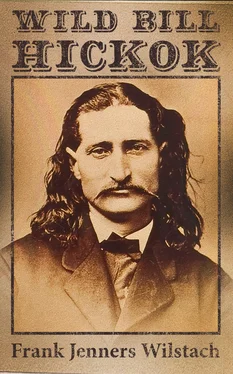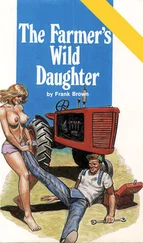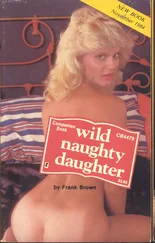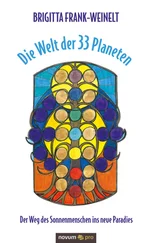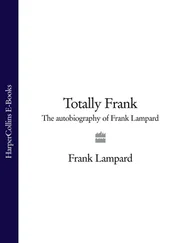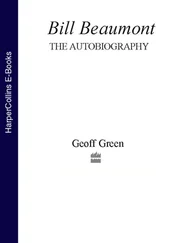Frank Jenners Wilstach
The Plainsman
e-artnow, 2021
Contact: info@e-artnow.org
EAN: 4064066500023
Foreword
Chapter I. The Prince of Pistoleers
Chapter II. Ancestry and Early Manhood
Chapter III. The Magnum Opus of Pistolry
Chapter IV. The McCanles Mystery Solved
Chapter V. Wartime Adventures
Chapter VI. Fight with Conquering Bear and a New Indian Romance
Chapter VII. The Duel with Dave Tutt
Chapter VIII. A Blue Ribbon Outburst of Guns
Chapter IX. On the Plains with the Wilson Party
Chapter X. Marshal of Hays City and Abilene
Chapter XI. Wild Bill Starts a Wild West Show
Chapter XII. Traits and Personal Appearance
Chapter XIII. Three Shooting Stars
Chapter XIV. A Visit to Cheyenne
Chapter XV. Romance and Marriage
Chapter XVI. The Calamity Jane—Wild Bill Myth
Chapter XVII. Last Days
Chapter XVIII. The Trial and Execution of Jack McCall
Table of Contents
It has not been the purpose of the writer to novelize Wild Bill Hickok. That has already been done, and rather effectively. So picturesque was the man, and so astounding his exploits, that it is little wonder he should have fallen into the hands of the fictioneers, who straightway made of him something of a Homeric figure. It has been my constant purpose to find out what was real, and what imaginary, in the tales about him that have been current for upward of sixty years.
Wild Bill was a fascinating personality to all who knew him. The mere mention of his name never failed to bring a crash of brasses from the orchestra. His friends never ceased to chant his praises as an honest man, an incredibly accurate pistol shot, and an individual who was without fear in the presence of danger. This is a good deal to say of any man, but it must be admitted that these encomiums have a solid basis of fact.
Wild Bill was no common gun-toter. He was not a bad-man, as the West defined the term in the ’60’s and ’70’s. That fact should be steadily borne in mind. It may be stated also that despite the implication of his pseudonym Bill never indulged in profane language—although he had a fine voice for it. In the opinion of the great marshals, peace officers, and fighting men of the West—men such as Bat Masterson, Bill Tilghman, and Buffalo Bill Cody, themselves renowned—Wild Bill was the greatest gun fighter and the most famous peace officer of the frontier.
When Sir Robert Walpole said all history is a lie he must have had prescience of certain pioneers who have published recollections of Wild Bill. If Hickok had known intimately all the illuminati of the last frontier who have written intimately of him, he must have had a very varied acquaintanceship. Curiously, writers now so young they must have been in their swaddling clothes while Bill lived, have reported astounding interviews they had with him—interviews which must have taken place at the cradle side.
A number of border scriveners have claimed to have known him at Dodge City—even to have seen him blot out several “six-shooter sharps" in that hamlet. Now, it is more than likely that he was never in Dodge City at all. He visited the locality as a scout when the only inhabitants were prairie dogs and coyotes, but the town of Dodge was founded only three years before Bill was assassinated, and his goings and comings during this period are accurately accounted for.
Recently, a pioneer furnished the writer with a minute account of how Bill, at crime-wrung Deadwood, sent four desperadoes to their homes on high with two shots each from his brace of pistols—and three of the men named as victims actually served as pallbearers at his funeral! I have sought to expose such legends as these in their proper places. However, all such flights of fancy emphasize a fact not to be overlooked: if a bad man was looking for trouble at all times Bill was (as Henry James said of that voluptuous little ink-lady George Sand) remarkably accessible.
How many men did Wild Bill kill? Aside from Indians, the estimated number has ranged all the way from fifteen to seventy-five. This does not include the soldiers he slew as a sharpshooter during the Civil War.
The writer would not care to be pinned down to a definite figure. The reason is that, after the computation has passed, say, a dozen, you come upon perturbing doubts and insistent questionings. Buffalo Bill used to count off thirty-five killings on his fingers; but it should be remembered that he never learned the truth as to the “McCanles gang massacre,” when three men were killed instead of the ten he tallied. Some fearsome fabricating, indeed, has gone on.
It has, in truth, been found impossible to investigate successfully all the reports of Bill’s powder-and-shot activities. There is a legend, for example, coming from Julesberg, Colorado, which sets forth that he bumped off a “sharp” on the field of picture-card finance; but no verification could be discovered. There is a tale, long afoot, of his having shot a whisky glass out of a man’s hand who referred to him, in a factious and familiar way, as Wild Bill. “Mr. Hickok” was the proper and organized custom of addressing him. And, too, a war-jig with guns is reported from Denver, but no facts could be discovered that verify that tragedy. Likewise, an incarnadine affair in a hotel at Leavenworth, when Bill spilled enough blood to paint a buggy. He may have engaged in all these six-shooter stampedes; but, on investigation, they all seem to be little else than skilfully varnished inventions.
It will readily be divined, however, that for a festively disposed individual—one, for example, who couldn’t hit a flying haystack with a ten-bore bird gun—to make Bill a target for pistol practice was downright suicide. And that, it appears, is what happened on numerous occasions; but as to Bill himself, he never missed the vital spot. Luck is enamoured of efficiency, even with pistols.
While Wild Bill was singularly free from those sins of the spirit, vanity and boastfulness, it must be admitted that, in the matter of dress, he had a flair for the bizarre. And, what was not altogether a general virtue of the time, he had an attachment for soap and water. Furthermore, he delighted in broadcloth and fine linen. Yet he dressed according to the mode of the border, not after the fashion and frumperies of the “besotted East.” All those who took notice of his attire observed that his shoe leather was ever of the best quality of French calf. But on the plains he laid aside these niceties and invariably wore a buckskin suit and moccasins.
Edward F. Colborn, of Salt Lake City, Utah, lived on the border a good part of the vermilion days that knew Wild Bill. Lately, the writer asked Mr. Colborn for his recollections of Bill’s everyday appearance.
“I can see Bill,” was the reply, “through the eyes of memory. Tall, erect, with long brown hair that swept in profusion to his shoulders: aquiline nose, high cheek bones, high forehead. His attire was generally that of the Mississippi steamboat gambler—a long-tailed cutaway coat of dark cloth; wide blue trousers, narrow at the bottom; a fancy vest; high-heeled boots with taps under the trousers; a leather belt with two white-handled ‘cap-and-ball’ Colts; a white shirt, a string tie, a graceful carriage, a moustache that drooped a little, and a poise and calm confidence that only good ancestral blood could give. He was to that country, the great plains, what John Oakhurst was to the Mother Lode in California in the ’50’s.”
Believing, doubtless, that this might be misleading, Colborn added, “I don’t think that Bill ever did a crooked thing in gambling or anything else. Everybody in those days gambled; so did Bill. Poker and faro-bank were the games, and with the cattle trade in ’73 came hazard, Mexican monte, and chuckaluck. There were gamblers by profession, but Bill was not of them. He was a man of little speech. Modesty of manner and avoidance of the limelight were among Wild Bill Hickok’s chief characteristics.”
Читать дальше
